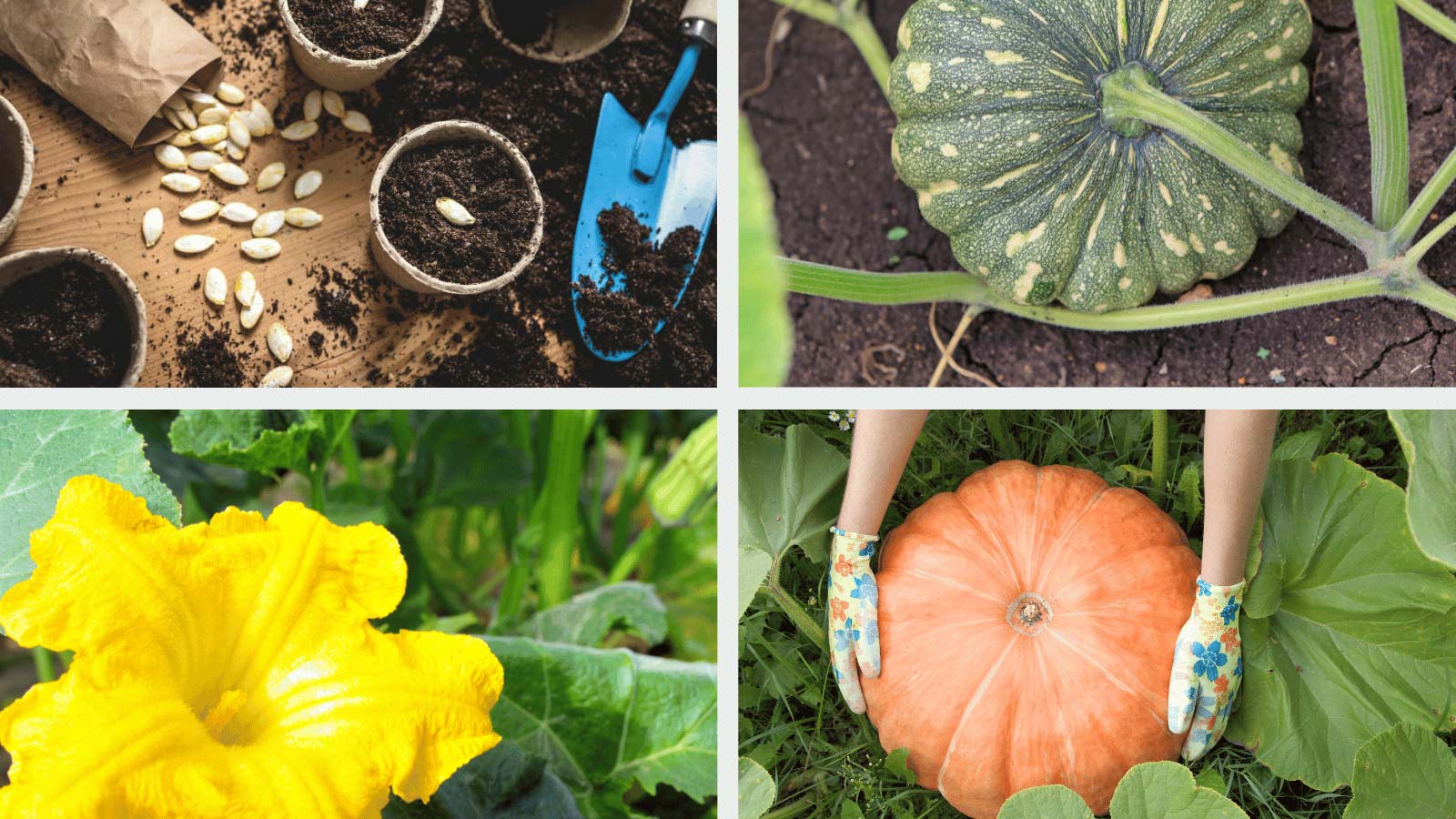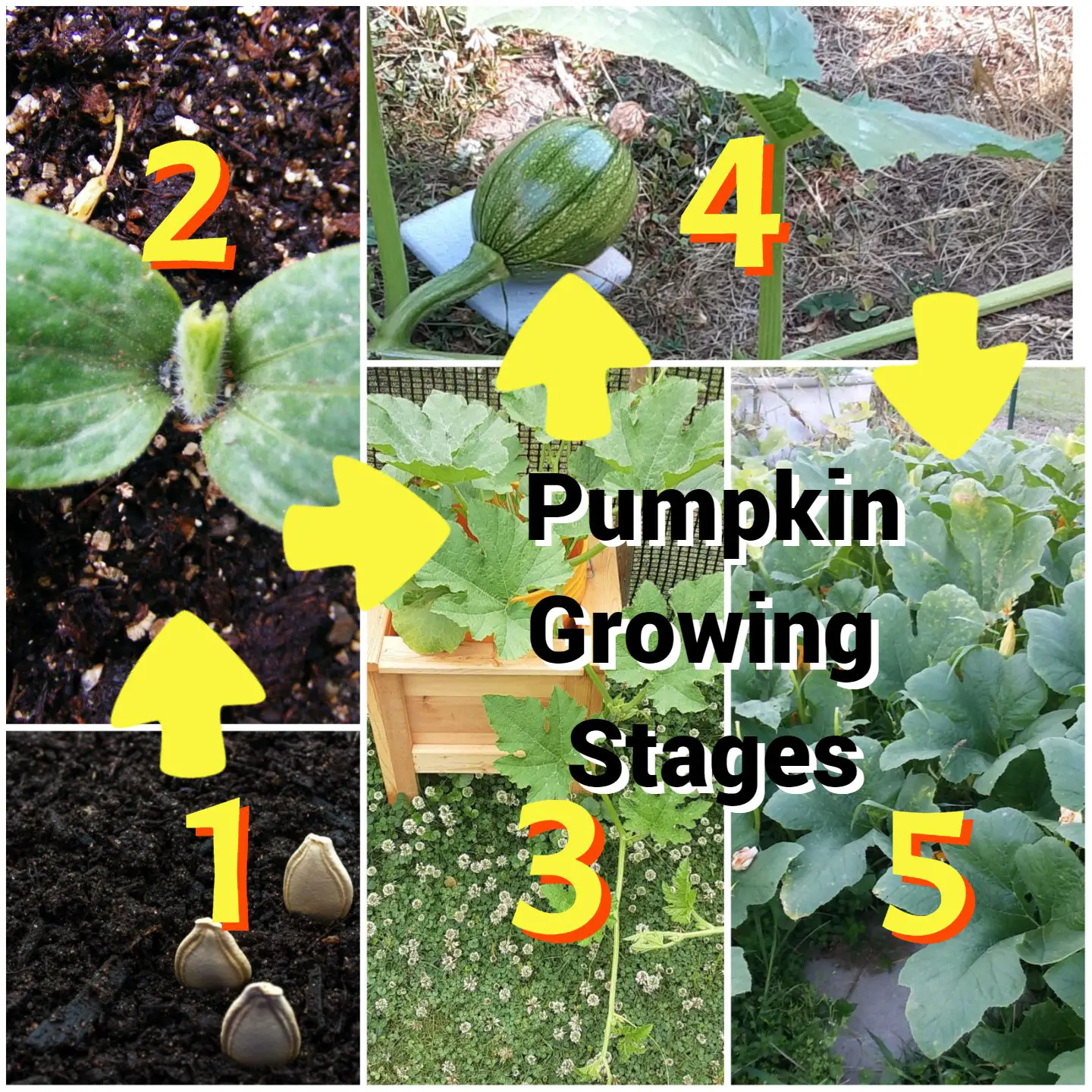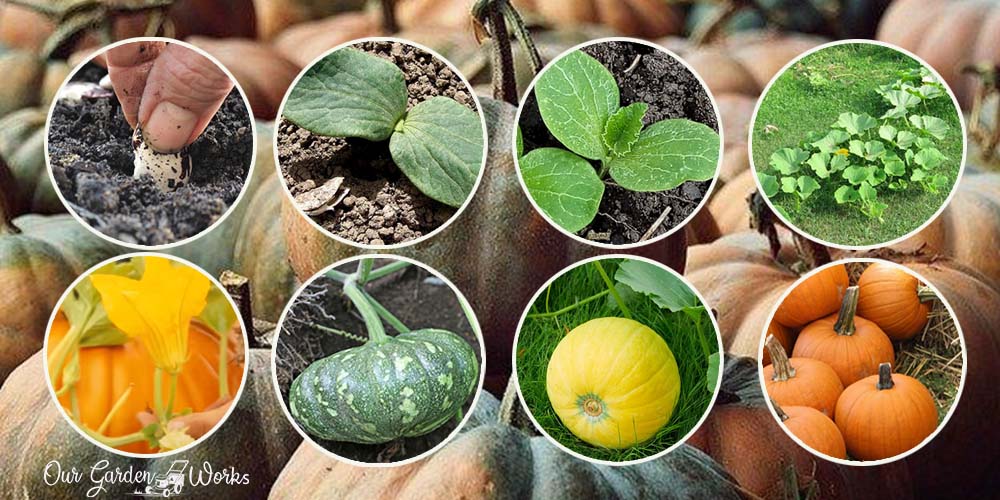Pumpkin Growth Stages: A Guide For A Bountiful Harvest
Ever wondered how those iconic, orange orbs of autumn, the pumpkins, transform from tiny seeds into the centerpiece of fall festivities? Growing pumpkins is a meticulous dance through various stages, each playing a vital role in the pumpkin's journey from the soil to your doorstep.
Embarking on the adventure of pumpkin cultivation is akin to embarking on a botanical odyssey. From the humble seed to the grand harvest, there's a series of transformations that are essential to the development of these iconic fall fruits. The process, typically unfolding over a span of three to four months, is a fascinating blend of science, patience, and a touch of artistry. Understanding the life cycle of a pumpkin plant is paramount to achieving a bountiful harvest and enjoying those magnificent, round vegetables that symbolize the season.
| Stage | Description | Key Actions |
|---|---|---|
| Seed Germination | The initial awakening of the pumpkin seed, initiating the growth process. | Planting seeds directly into the ground after the last frost. Ensuring soil temperatures between 60 and 85F. |
| Sprout Emergence | The emergence of the sprout from the seed. | Providing adequate moisture and sunlight. |
| Vegetative Growth | The rapid development of leaves and vines. | Regular watering, balanced fertilization, and weeding. |
| Flowering | The appearance of both male and female flowers, initiating pollination. | Monitoring and ensuring pollination by bees or hand-pollinating if necessary. |
| Pollination | The transfer of pollen from the male to the female flower, leading to fruit development. | Encouraging bee activity or manual pollination. |
| Fruit Development | The growth of the pumpkin, starting as a small green bulb and increasing in size. | Continuous watering, fertilization, and protection from pests and diseases. |
| Maturation (Green Pumpkin Stage) | The crucial phase where the pumpkin's structure develops, including skin hardening. | Monitoring for disease and pest control, ensuring adequate sunlight. |
| Ripening and Harvest | The final stage, where the pumpkin matures and the skin color deepens. The pumpkin is ready for harvest when the stem is hard and dry. | Checking the pumpkin's skin color (depending on the variety) and the stem. |
The journey of pumpkin growth commences with the planting of seeds, the first step in this botanical adventure. This should be done approximately two weeks after the last frost. Pumpkin seeds, to trigger germination, require soil temperatures ranging from 60 to 85 degrees Fahrenheit, making late spring the ideal time to begin. Select a sunny spot in your garden and directly sow the seeds into the ground, ideally sandy soil, at a depth of about an inch. The anticipation begins as the seeds, nestled in their beds, await the signal to sprout.
- Jonathan Winters Height How Tall Was The Comedian
- Springfield Il Movie Times Tickets Amc More Find Now
As the seeds germinate, they soak up water, expanding and eventually cracking open. A tiny root emerges, anchoring the plant, followed by a shoot reaching for the sun. Early growth is characterized by the development of large, coarse leaves. These leaves, sprawling across the ground, are the plants solar panels, capturing sunlight to fuel the growth of the pumpkin. During this stage, regular watering, balanced fertilization, and diligent weeding become essential practices, ensuring that the pumpkin plant receives the nutrients and sunlight it requires for optimal growth.
The flowering stage is a critical milestone, a display of nature's artistry. Pumpkin plants produce both male and female flowers. The male flowers typically appear first, followed by the female flowers, which are distinguished by a small, bulbous structure at the base - the nascent pumpkin. Pollination, the transfer of pollen from the male to the female flower, is essential for fruit development. This process is typically facilitated by bees and other pollinators, but can also be hand-pollinated if necessary. The key to a successful pollination is the transfer of pollen from the male flower to the receptive female flower. The fruit then starts to grow, growing rapidly in size by absorbing water and nutrients through the vine.
Following successful pollination, the fruiting stage commences. The small green bulb at the base of the female flower begins to swell, rapidly increasing in size. This is a period of significant growth, during which the pumpkin draws water and nutrients from the vine. Regular watering, fertilization, and protection from pests and diseases become paramount. During this green pumpkin stage, the fruits structure develops, including the hardening of its skin, which is crucial for the pumpkin's maturation and storage.
- Duralast Rotors Brake Pads Your Guide From Autozone
- 7th Street Burger Discover What People Are Saying More
The green pumpkin stage is a critical period for the developing fruit. During this phase, the pumpkin's structure is solidified. Its skin hardens, providing a protective barrier against the elements and potential damage. This development is greatly influenced by the environmental conditions and care provided by the grower. Adequate sunlight, proper watering, and vigilance in controlling diseases and pests ensure the pumpkin's healthy development. This is a crucial time in the pumpkins life, influencing its final appearance and quality.
As the pumpkin matures, it undergoes the ripening phase, the last phase before harvest. The skin of the pumpkin begins to change color, a key indicator of ripeness. The precise color depends on the variety, ranging from deep orange to various shades of green or white. In this stage, the pumpkin accumulates the sugars that give it its distinct flavor. The vines begin to dry, and the stem hardens. The pumpkin is ready for harvest when the stem is dry and hard, and the skin exhibits the appropriate color for its variety.
Harvesting pumpkins is the thrilling culmination of months of care and patience. Once the pumpkin has reached its full color, and the stem is dry and hard, it is ready to be harvested. Using a sharp knife or pruning shears, cut the stem, leaving several inches attached to the pumpkin. Proper handling is important to avoid damaging the pumpkin. Once harvested, the pumpkins can be stored in a cool, dry place, allowing you to enjoy the fruits of your labor throughout the fall season.
Growing pumpkins is an immersive journey, a fascinating lesson in the rhythms of nature. By understanding the different stages of growth, from germination to harvest, gardeners can provide the right care at each stage, resulting in a successful and rewarding harvest. Learning about the pumpkin growing stages will guarantee the appropriate care, ensuring that you get the most from your growing experience.
- Oleana Restaurant In Cambridge Ma Menu Dining Info
- Matteo Milleri Anymas Rise Tale Of Us Legacy Latest News

Pumpkin Growing Stages Life Cycle Guide Seed >>> Harvest

Pumpkin Growth Stages

8 Pumpkin Growing Stages From Seed To Maturity